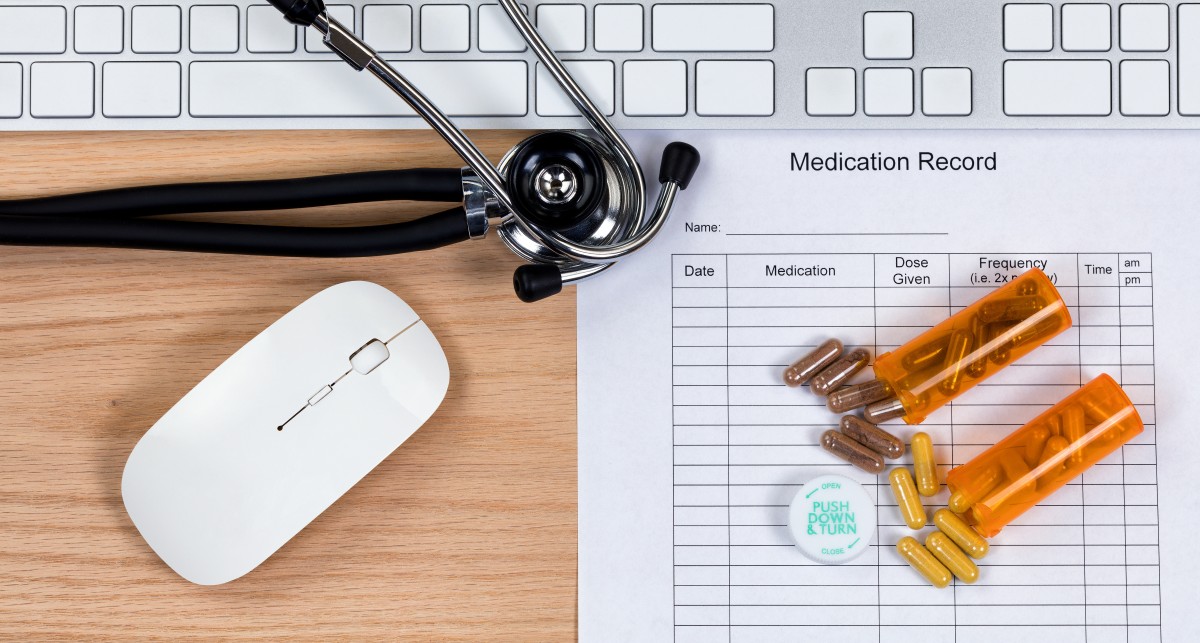Using Patient Education Videos to Support Preventive Care Strategies
As a healthcare provider, you know prevention saves lives. From routine screenings and lifestyle counseling to vaccinations and early detection,...
4 min read
Robert McDermott Mar 2, 2023 11:00:00 AM
 In healthcare, a lot of processes have remained the same for years because, initially, they were the only processes available. For instance, the processes around prescribing medications remained the same for decades, even as available drug therapies grew exponentially. Doctors and other prescriber’s offices were laden with reference books, making prescribing medications safely and accurately a time consuming and laborious task.
In healthcare, a lot of processes have remained the same for years because, initially, they were the only processes available. For instance, the processes around prescribing medications remained the same for decades, even as available drug therapies grew exponentially. Doctors and other prescriber’s offices were laden with reference books, making prescribing medications safely and accurately a time consuming and laborious task.
Thankfully, healthcare technology and software are finally catching up to pharmaceutical advancements, and ePrescribing software is improving efficiency and patient safety. Improved access to pharmaceutical references is essential, but so is understanding a patient’s general medication and controlled substance prescription history. In the same way reference books provide information about medications, prescription histories are an essential part of understanding your patients and what’s best for them. The right ePrescription software not only simplifies your prescribing workflow with built-in medication reference info but also connects you directly to the patient’s medication history.
Quick Links
A comprehensive medication history includes a complete history of medications a patient has both been prescribed in the past and is currently taking. Information should include the name of the drug, dosage strength, quantity, and how long the patient used or has been using the medication.
Prescribers must have a complete understanding of a patient’s medication history to not only provide the best care and medication therapies moving forward, but to also prevent unintended interactions that can be risky for patients.
 How Medication History Impacts Patient Care and Patient Outcomes
How Medication History Impacts Patient Care and Patient OutcomesMedication errors are a significant problem. In the U.S. alone, 7-9000 people die per year due to medication errors and significantly more have negative interactions which don’t require hospitalization but still impact their well-being. Quite often, medication errors are completely preventable.
One of the best tools we have to prevent medication errors is a patient’s medication history. With a complete understanding of prescription history, as well as gathering information on supplements, vitamins, OTC medications, and past adverse drug events (ADE), prescribers can assess which drug therapies will best suit their patients, treat ongoing conditions, or alleviate current symptoms.
Further, incomplete medication histories can result in a failure to recognize medical situations and conditions, such as an ADE, and further complicate treatment and care. In fact, in one study, roughly 93% of patients presenting with an ADE had at least one error in their medication history. Again, this is fully preventable.
Often, medication histories are reconciled during transitions of care, which is when most errors are identified. In fact, another study found that nearly 70% of patients, upon entering a hospital or acute care setting, have medication errors on their list.
How many issues could be prevented with an understanding of medication histories? How would prescribers adjust medications and treatment if they were aware of potential interactions or contraindications?
The best chance a prescriber has to get a full view of a patient’s history to impact their future health and well-being is to understand the prescriptions and medications they have taken and their efficacy. Further, full transparency is necessary to assess current medications and which drug therapies are best suited for individual patients. Without that information, outcomes are, at best, unpredictable, and at worst dangerous.
 How the Right ePrescription Software Can Help Provide a Full Medication History
How the Right ePrescription Software Can Help Provide a Full Medication HistoryFor many prescribers, relying on patients to provide their medication history is pretty standard. However, as most prescribers also know, patients are not always the most reliable source. Whether it’s forgetting prescriptions or dosages, or not realizing they’ve experienced an adverse drug event, this method of retrieving and building a medication history may lead to additional issues and complications. This is where cloud-based electronic prescribing software can potentially bring needed resources into one accessible place for accurate, efficient prescription writing.
It’s worth looking for specialized, yet easy to navigate, ePrescribing software options with built-in feature sets that include access to a patient's overall prescription history. This type of ePrescribing software accesses a national pharmacy database, providing a big picture view of a patient's medication history over the past 12 months. This information helps fill in the gaps where a patient can’t recall what meds they’ve taken and/or when they took them.
Most doctors don’t even realize this information can be easily accessible with the right ePrescribing software. But it’s a game changer. Accessing the patient's 12-month medication history, directly through your ePrescribing software, makes for safer, more accurate prescriptions and decreases time spent writing them.
Now, take your ePrescribing software with that medication history access and combine it with direct access to your state-based prescription drug monitoring program (PMP/PDMP), then you have one of the most reliable and comprehensive prescribing tools at your disposal.
Let’s take a quick look at the importance of PMPs. The purpose behind prescription drug monitoring programs is to securely provide you access to a patient’s controlled substance prescription history. It also requires you to enter the prescriptions you write for controlled substances into the database. And, while many ePrescription software solutions facilitate the basic transmission of electronic prescriptions, they still require you to log in to a PMP database separately. That additional, time-consuming step often means checking the controlled substance prescription history is delayed or overlooked. As a result, medication errors may occur.
There are very few leading ePrescription software solutions that provide PMP database integration, along with direct access to the 12-month general medication prescription history. That’s one of the areas where iCoreRx from iCoreConnect differentiates itself. In addition to improving efficiency, iCoreRx also improves resource utilization and patient safety.
More specifically, iCoreConnect’s ePrescription solution provides you immediate access to the pharmacy database of medication prescription history as well as direct access to your state’s prescription drug monitoring program. For even greater functionality, iCoreRx puts the Lexicomp® drug directory at your fingertips. You have quick and easy access to always current evidence-based drug treatment information with dosage and indications, and interaction information. With such complete information, you can write the most accurate prescription for your patient and avoid medication errors.
The goal of ePrescribing is to simplify the prescription process for prescribers and patients alike, removing barriers to access and adherence. Choosing what’s right for your patients can be as simple as choosing what’s right for your practice. If you’re ready to see the iCoreConnect difference, book a demo with our team today and let’s start improving your efficiency and patient safety.

As a healthcare provider, you know prevention saves lives. From routine screenings and lifestyle counseling to vaccinations and early detection,...

There’s no denying that the AI boom is here. The American Medical Association reports that 66% of physicians are currently using artificial...

If only managing your practice’s revenue cycle came with a crystal ball. You could spot claim denials before they happen, predict when patients might...

In 2019, the pharmaceutical industry spent $83 billion dollars on research and development and the introduction of new drugs for sale. Those...

There is no role in healthcare responsible for only a single task. From front office and administrative staff to healthcare providers themselves,...

ePrescribing software is no longer the new kid on the healthcare efficiency block. Though we’re seeing greater adoption, in part due to regulations...